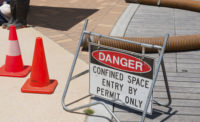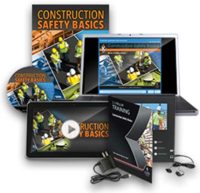After more than 20 years in the development process, the Confined Spaces in Construction Standard has finally been released by OSHA. Companies now have less than 90 days to comply with the Standard’s effective date of August 3, as there is no phase-in period for the provisions.
The Standard will provide employees performing construction activities with protections similar to those general industry employees have had for more than two decades, but with some differences tailored to employers performing construction work.
Employers will notice several differences between general industry 29 CFR 1910.146 Confined Space Standard and the new Subpart AA of 29 CFR 1926, including:
- More detailed provisions for coordinating activities with other employers at the site;
- Requiring a competent person to evaluate the site and identify confined and permit spaces;
- Requiring continuous atmospheric monitoring when possible;
- Requiring continuous monitoring of engulfment hazards;
- Allowing for the suspension of a permit, instead of cancellation;
- Requiring employers who direct employees to enter a space without using a complete permit system to eliminate or isolate any physical hazards first;
- Requiring employers who are relying on local entities for emergency services to arrange for those responders to give the employer advance notice if they will be unable to respond for a period of time; and
- Requiring employers to provide training in a language and vocabulary that the employee understands.
According to the preamble to the final rule: “OSHA recognizes the differences between the general industry (29 CFR 1910.146) and the construction Subpart AA Standard can make it complicated for employers to comply. This can be the case when performing maintenance and construction work at the same time in the same confined space. In order to ease the compliance burden on these employers, OSHA will consider compliance with the construction rule as compliance with § 1910.146.”
“One solution, from a training perspective, is to train employees for the higher, more stringent construction Standard, because they will then be compliant under both the construction and general industry confined space Standards,” said Mark Stromme, J. J. Keller workplace safety subject-matter expert.
“This Standard will undoubtedly bring greater safety to confined space work, with its emphasis on training and communication,” Stromme said. “But the Standard alone will not do this. Construction and affected facilities must do their part to diligently follow and implement the provisions to not only comply with the Standard but raise the bar on safety for workers.”
“J. J. Keller is currently developing a variety of training solutions and updating existing publications impacted by the Standard in order to help companies comply. Visit JJKeller.com/ConfinedSpaces-Construction for additional details and guidance on provisions of the new Standard as well as product information as it becomes available.
About J. J. Keller & Associates, Inc.
Since its beginning as a one-man consulting firm in 1953, J. J. Keller & Associates, Inc. has grown to become the most respected name in safety and regulatory compliance. Now over 1,300 associates strong, J. J. Keller serves over 420,000 customers — including over 90% of the Fortune 1000® companies. The company’s subject-matter expertise spans nearly 1,500 topics and its diverse solutions include training via online courses, streaming video or DVD; online management tools; managed services; consulting services; compliance manuals and instructional publications; E-Logs and mobile technology, forms and supplies.
Safety professionals rely on J. J. Keller® in-house expertise and its wide selection of products and services to reduce risk and improve regulatory compliance, performance management and operational efficiency. For more information, visit JJKeller.com, JJKellerELogs.com and JJKellerservices.com.



